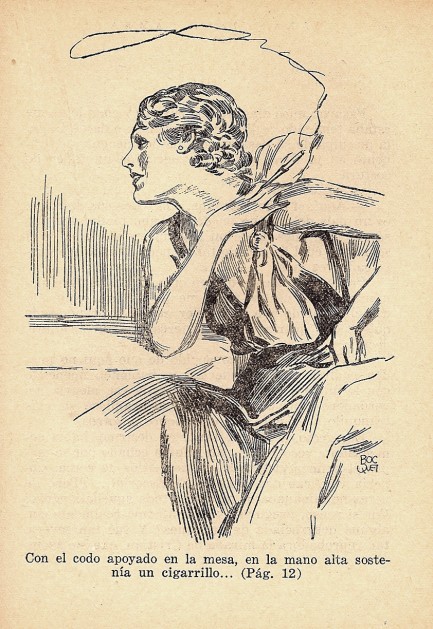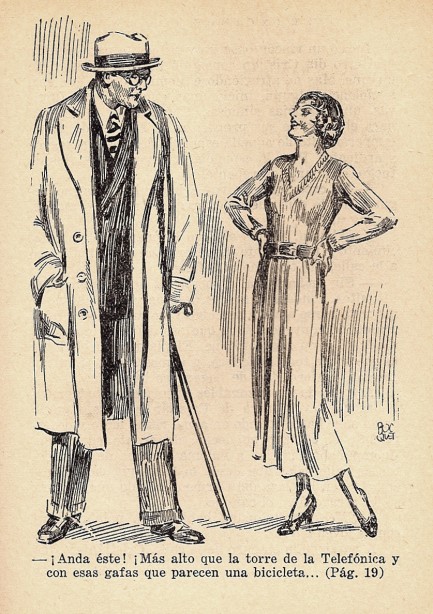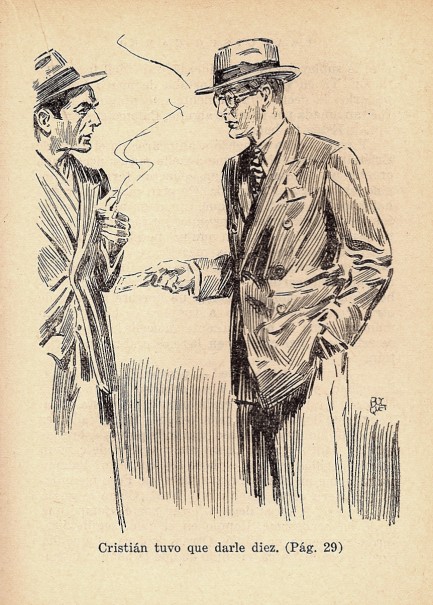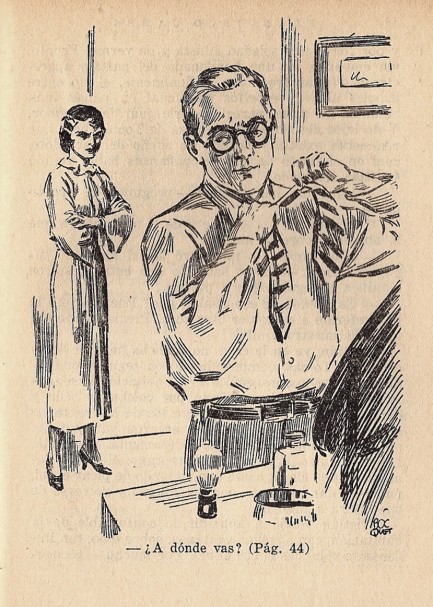 Before Superman, Batman, and Spiderman there was the Phantom. 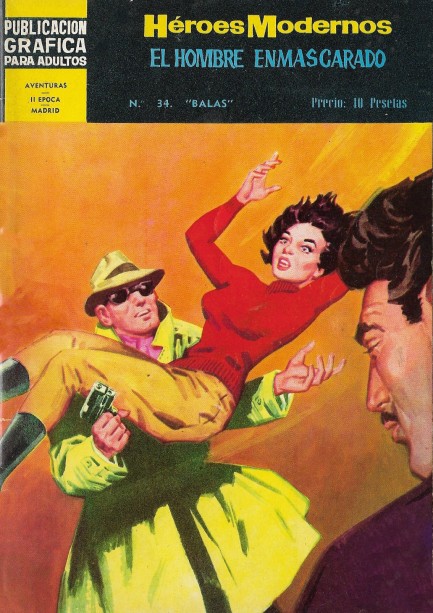
We picked up a copy of El Hombre Enmascarado late last year when we were passing through Granada, and in typical fashion, it's taken us almost a year to scan anything from it. But never let the early become the enemy of the late, or something to that nonsensical effect, so above you see the cover of issue thirty-four, written and illustrated by Lee Falk and published in 1960 by Editorial Dolar as part of its Héroes Modernos series. However, Dolar was merely translating a U.S. serial. There the main character was known as the Phantom, originating as a daily syndicated comic strip. This episode is titled “Balas,” or “Bullets.” The only credit inside is for Falk, but we're actually unsure whether he was the sole hand behind this. Although Falk was an artist, Phantom strips are generally credited to three cartoonists—Ray Moore, Wilson McCoy and Seymond Barry.
Falk invented the character of the Phantom in 1936, which makes him a precursor to modern superheroes. He even predates Superman, who came in 1936, and Batman, who arrived in 1940. His background is fun. During the age of piracy, Sir Christopher Standish was killed in an attack that his son survived. That son swore to fight evil in his father's name, and pledged that his descendants would too. So each new Standish generation inherits a costume and fights crime, perpetuating the idea among the public that the masked vigilante is immortal—a phantom. In addition to the costume he carries two pistols and two rings: one bears the image of a skull, which he uses to mark foes by slugging them in the jaw. The other ring is a peace symbol. His sidekick is a wolf and he also sometimes rides a white stallion. We've scanned a few interior pages plus the slightly defaced rear cover for your enjoyment. And perhaps—who knows?—we'll have more from the masked man later.
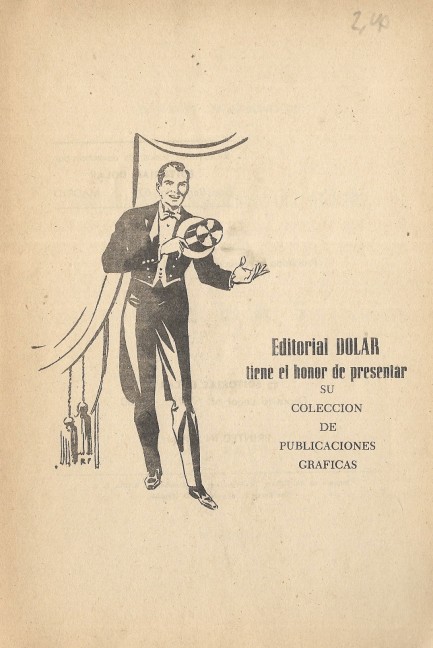 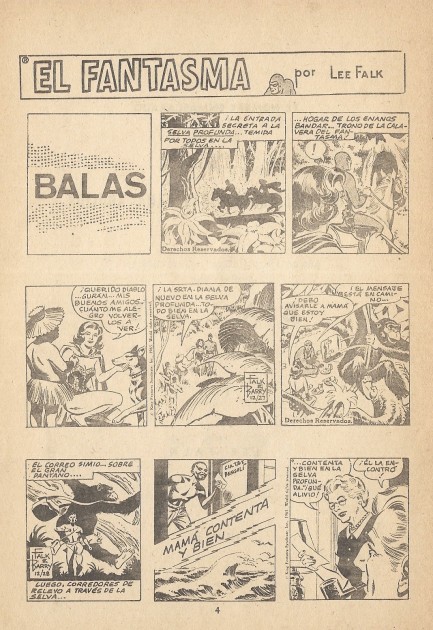 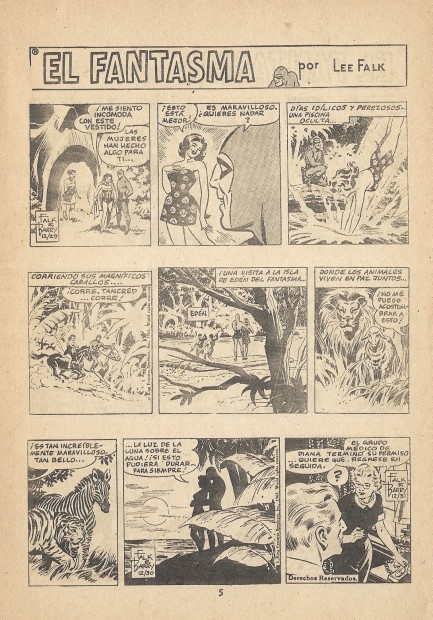 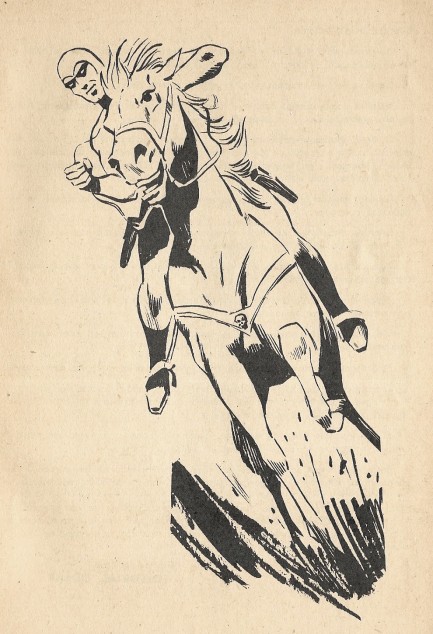 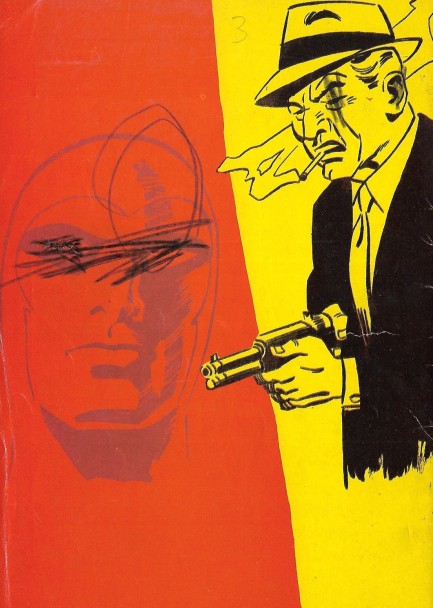
 Anything could happen there and it usually did. 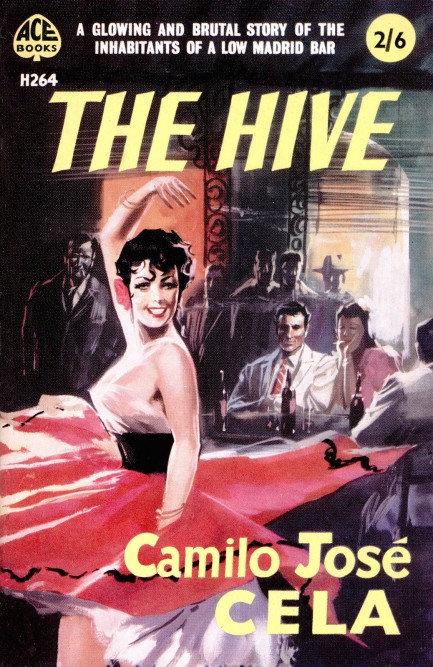
We're drawn to books about places we know, so Camilo José Cela's The Hive was a natural. Originally published in 1950 and titled La colmena, the tale is largely set in a Madrid bar known as Doña Rosa's Café. There are also scenes set in apartments, streets, and other cafés, as Cela explores the lives of more than three-hundred characters in brief sketches, slowly weaving these warp and weft strands into a tapestry that ultimately represents a single character—Madrid circa 1943. Maybe that doesn't sound thrilling, but we liked it. Cela was economical yet vivid, like here, at closing time for the café:
Within half an hour the café will be empty. It will be like a man who has suddenly lost his memory.
And here, about a boy who survives by singing on the street:
He is too young in years for cynicism—or resignation—to have slashed its mark across his face, and therefore it has a beautiful, candid stupidity, the expression of one who understands nothing of anything that happens. For [him] everything that happens is a miracle: he was born by a miracle, he eats by a miracle, has lived by a miracle, and has the strength to sing by pure miracle.
Cela was a fascist, a supporter of Francisco Franco's dictatorship. His beliefs came with contradictions, for example he worked as a censor for the government, was himself banned so that The Hive had to be published first in Argentina, yet remained loyal to the regime that had financially and reputationally harmed him. He even became an informer. In Cela's writing there's humor, but also coldness, a sense of observing small and pathetic people. For someone born into material comfort in a Spain where many families retain unearned wealth for hundreds of years, his subtle judgements came across to us as cruel, the product of a person who looked closely at everyone but himself. The book isn't overtly political, though, which makes it easier to focus on the skill that eventually won him a Nobel Prize.
The edition you see here is from Ace Books in 1959 with an uncredited cover. We went back and forth on this artist. We want to say it's Sandro Symeoni, but we don't have enough cred to make that call definitively. It looks like some of the items he painted, but publishing companies sometimes sought art of similar styles, or directed illustrators to produce something similar to what another artist had provided. During the late 1950s and early ’60s Ace Books had many covers in this general style. That said, compare the close-ups below. The first is from the above cover, and the rest are from confirmed Symeonis. If The Hive wasn't painted by the same person, then whoever did paint it went beyond merely working in a similar style—he was a thief. 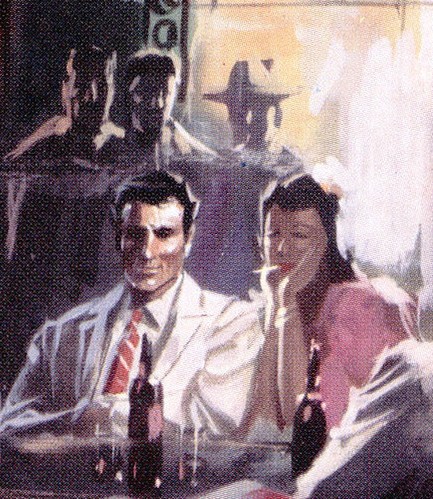 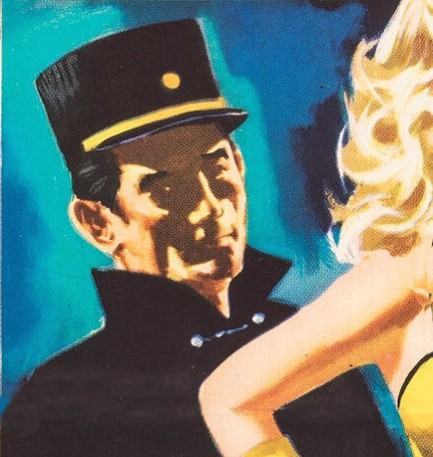 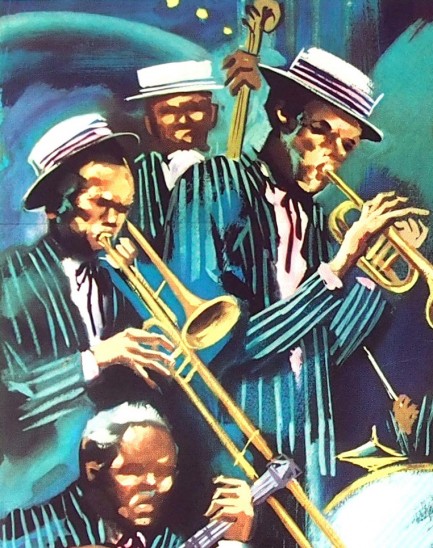 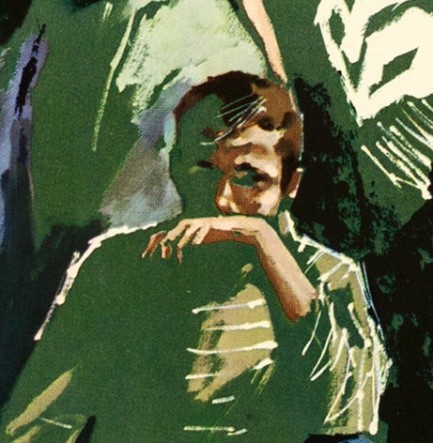 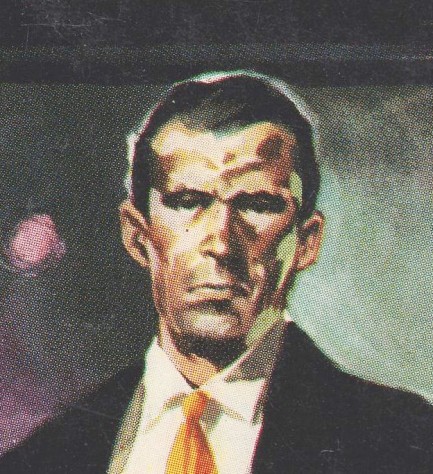
 The fundamental things apply as time goes by. 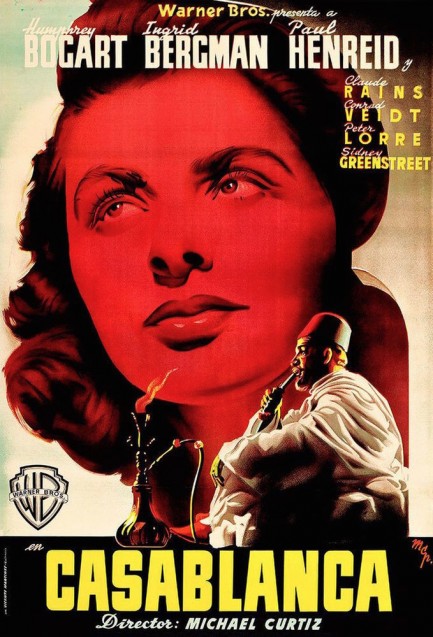
Yes, we're back to Casablanca. Above you see a Spanish poster for this award winning war drama, which premiered in Madrid today in 1946. The movie was a smash hit everywhere because, simply put, it dealt with every important theme in the realm of human experience, which is why it's still fundamental viewing. And that would be true even if most of the characters weren't migrants—a type of person that's very prominent in the news these days.
The poster art is signed MCP, the designation applied to work produced by the Barcelona based design company owned by artists Ramón Martí, Josep Clavé, and Hernán Pico. We'll get back to this trio's output a bit later. Casablanca generated some very nice promos, and MCP's effort is one of the best, in our opinion. We also recommend checking out the Japanese ones here.
 Fatal confrontation leaves world a sadder place. 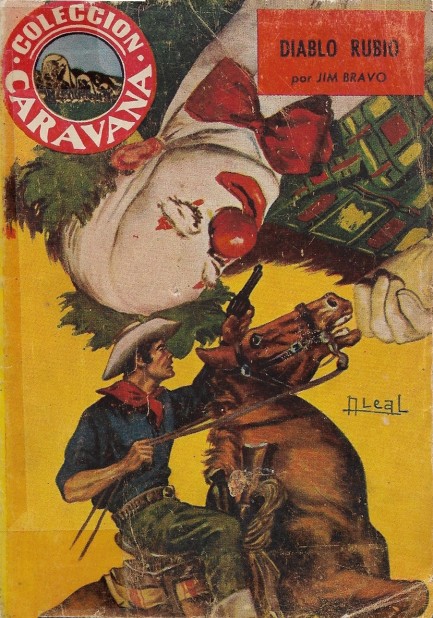
Here's a colorful little something from our house hunting raid last week, a pocket paperback entitled Diablo Rubio, or “blonde devil,” written by Jim Bravo for Madrid based Publicaciones Crucero. The narrative is set in Arizona and concerns a famed gunman and the rivals that dog his heels. We haven't actually read it yet. We can read Spanish but we're too lazy to do it right now, even though we're dying to know why the clown got shot. Ever been to a rodeo? Cowboys and clowns are natural allies, so there must be a complex story behind this tragedy. The art is uncredited, of course, but seems to be signed “M Leal” or “N Leal.” We get no hits on either name. Nor do we get hits on writer Jim Bravo, an obvious pseudonym. But we'll dig, and if we find anything we'll report back.
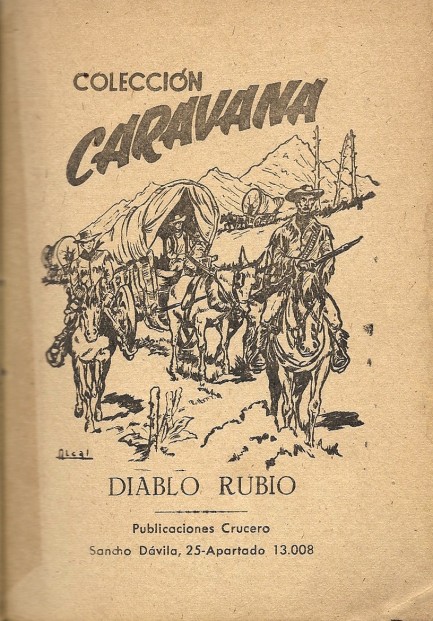
 Like Shakespeare wrote, what's past is prologue. 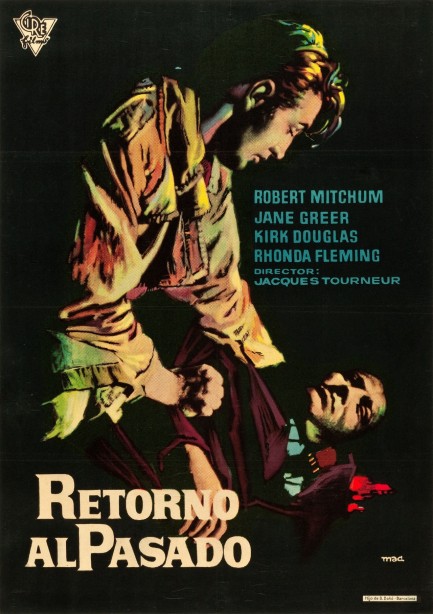
This unusual poster was made to promote the Spanish run of Retorno al pasado, a movie better known as Out of the Past. The title says it all. A man who thinks he's left his sordid past behind sees it rear its ugly head and threaten to ruin the good future he's planned for himself. Starring Robert Mitchum, Jane Greer, and Kirk Douglas, this is one of the top noir thrillers, in our opinion. Certainly it's one of the most beautifully shot, thanks to director Jacques Tourneur and cinematographer Nicholas Mesuraca. Like the poster art by Macario Gomez, the film is richly textured and lushly black, which makes for a nice sense of gathering danger, especially in the pivotal fight sequence about forty minutes in. Plus it has the always compelling Mexico connection used by many excellent noirs, as well as nice location shooting around Lake Tahoe and Reno. Highly recommended, this one. After opening in the U.S. in November 1947 it had its Spanish premiere in Madrid today in 1948.
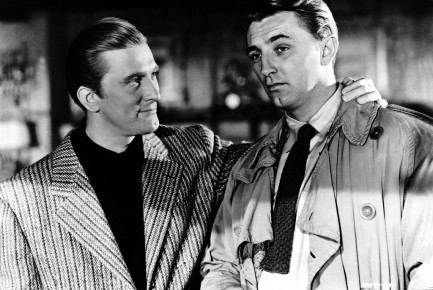 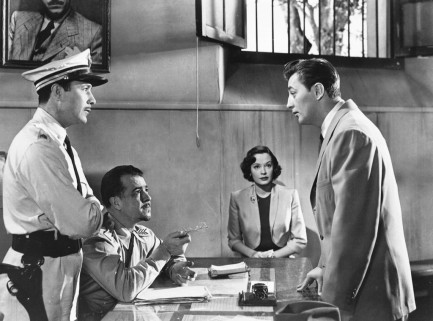  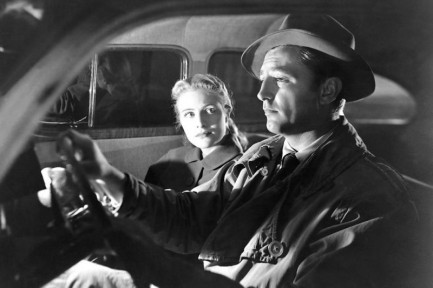 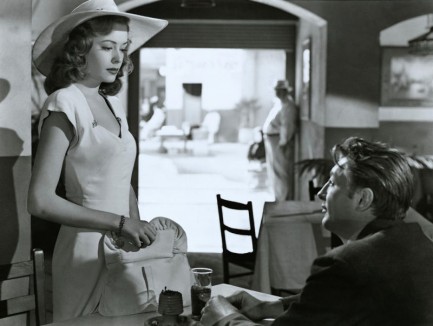 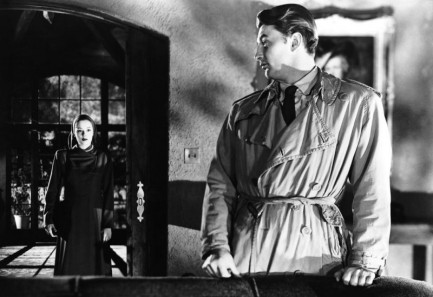 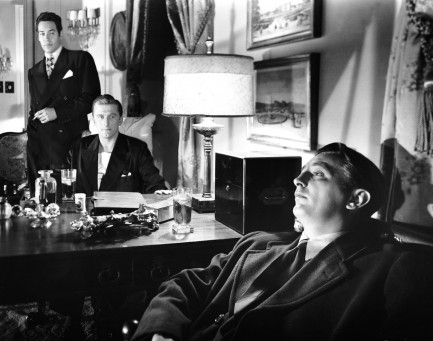 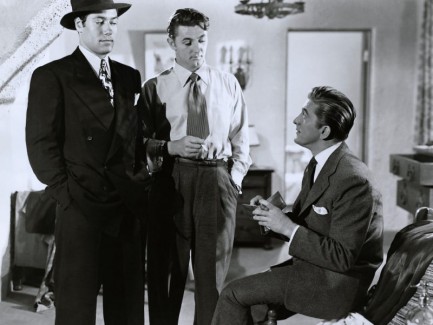
 For a little while at least, sports can bring a nation together. 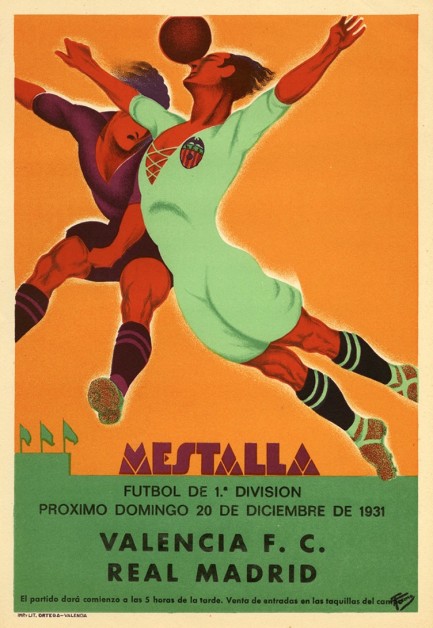
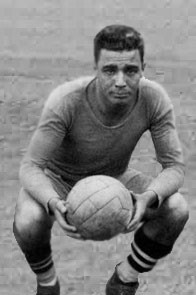 The art deco influenced fútbol poster above, which is signed in its lower right corner by an artist whose identity is unknown to us, advertises a match between top flight Spanish sides Valencia F.C. and Real Madrid at Valencia’s Estadio de Mestalla. Months earlier Spain had become a republic after years of dictatorship under Miguel Primo de Rivera, and was about to enter into a period of unrest and rising fascism, leading to civil war and decades more dictatorship under Francisco Franco. But on this particular winter Sunday in Valencia the sole battle took place on the pitch at Mestalla. The star player on the field was Manuel Olivares Lapeña, who you see at right, but it was Jaime Lazcano Escolá and Juan Costa Font who netted goals that day. The game ended in a 1-1 draw—a triumph for a Valencia squad languishing at the bottom third of the table. But Real Madrid won the league. The art deco influenced fútbol poster above, which is signed in its lower right corner by an artist whose identity is unknown to us, advertises a match between top flight Spanish sides Valencia F.C. and Real Madrid at Valencia’s Estadio de Mestalla. Months earlier Spain had become a republic after years of dictatorship under Miguel Primo de Rivera, and was about to enter into a period of unrest and rising fascism, leading to civil war and decades more dictatorship under Francisco Franco. But on this particular winter Sunday in Valencia the sole battle took place on the pitch at Mestalla. The star player on the field was Manuel Olivares Lapeña, who you see at right, but it was Jaime Lazcano Escolá and Juan Costa Font who netted goals that day. The game ended in a 1-1 draw—a triumph for a Valencia squad languishing at the bottom third of the table. But Real Madrid won the league.
 It's one of the best uses of sixty minutes we can imagine (that doesn't involve taking off our clothes). 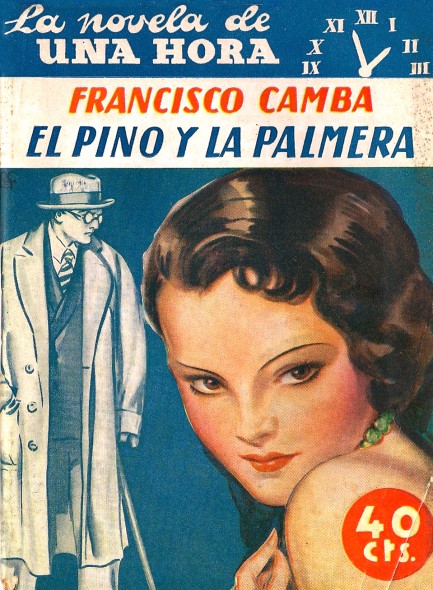
We have quite a bit of Spanish pulp we’ve been lazy about sharing, but today we’re remedying that at least a little. We snagged this little item entitled El Piño y la Palmera (The Pine and the Palm) in Spain several years ago. It’s one of Madrid-based Editores Reunidos’ novelas de una hora, or one-hour novels, so-named because it’s about 60 pages long (more like 50, after masthead credits, illustrations, and rear advertising). This one appeared all the way back in 1936 and has fiction from Francisco Camba and art credited to Bocquet y Longoria. The way Spanish surnames function, this could be one person, but in this case it’s two—cover artist José Longoria and interior artist José P. Bocquet. We got this for two euros, which we think is a pretty nice price for an hour’s entertainment.
 The pain in Spain stays mainly in the brain. 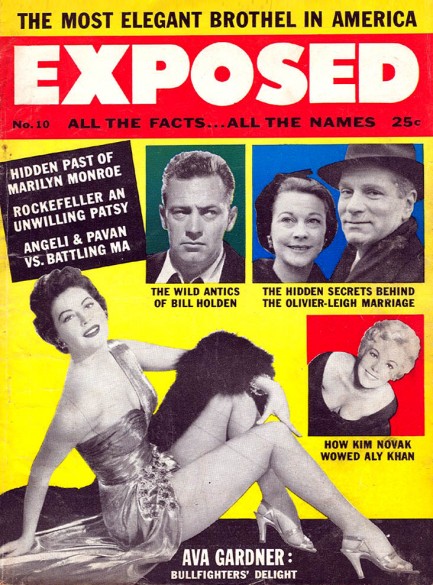
The cover of this December 1956 issue of the American tabloid Exposed offers teasers on Kim Novak, Laurence Olivier, and Hollywood bad boy William Holden, but it's Ava Gardner who's front and center as readers learn about her mingling with Spanish bullfighters. Gardner had been introduced to the spectacle of the plaza de toros several years earlier by Ernest Hemingway, and she became a fixture at both the fights and on the Madrid social circuit. Since she was married to Frank Sinatra, this was of great interest to U.S. readers, not to mention Sinatra himself, and all the tabloids were reporting on it. The publicity didn’t help what was already a stormy marriage. Gardner eventually pursued and bedded matador Luis Miguel Dominguín, and not very discreetly. Everyone knew. Sinatra knew, and it tortured him. His buddy Humphrey Bogart rebuked Gardner, telling her, “Half the world’s female population would throw themselves at Frank’s feet and you are flouncing around with guys who wear capes and ballerina slippers.” Sinatra knew he was losing the love of his life, and he wasn't about to let it happen without a fight. He flew to Spain in a desperate bid to win his wife back, but it was no use—seven months after this Exposed hit newsstands, he and Gardner were divorced.
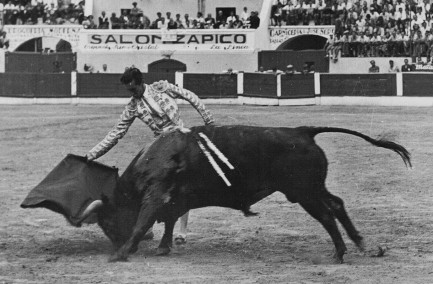 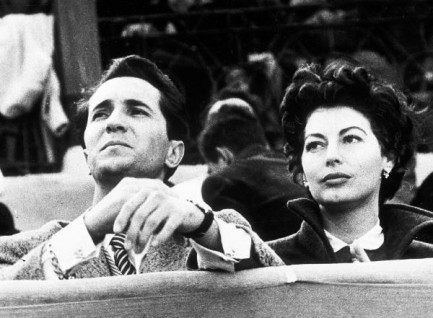 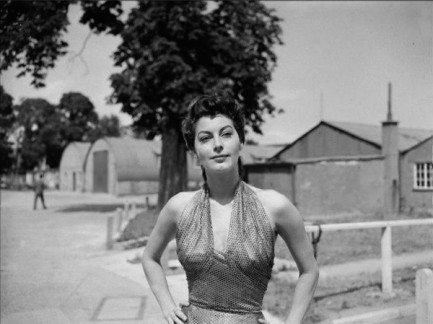
 The National Police Gazette picks on an aging Ava Gardner. 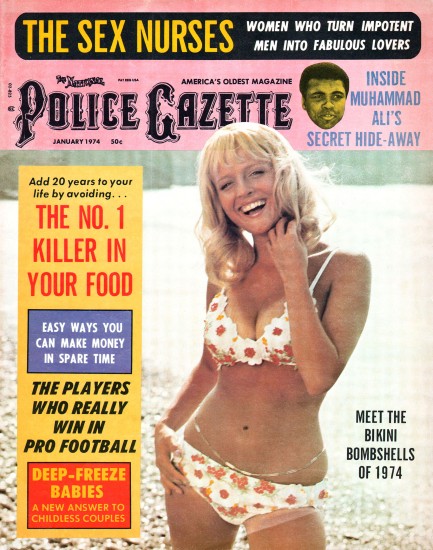
This January 1974 issue of The National Police Gazette gives shape to every actress’s worst fear—natural aging. Editors slapped the header: “Oh my God! What’s happened to Ava?” above a photo of fifty-four year-old Ava Gardner, and the collective shiver that ran through Hollywood women probably resulted in a 4.5 Richter Scale earth temblor. Interestingly, Gazette editors don’t actually slam Gardner in the accompanying article, but they don’t have to because the message is clear in that header and the accompanying photo—Holy shit, look at this hag that just fell out of the ugly tree! There’s no doubt show business was and is a brutal field for women, but at least in Ava’s case you don’t have to feel too bad. She had become a millionaire thanks to cinema and was living in comfort in her favorite country Spain, sipping rioja and perfecting the siesta. The presumed gasps of horror from fans that remembered her as an ingénue would have been the flipside of a Devil’s bargain that allowed her to achieve that life. We doubt she gave a toss what the Gazette thought anyway. Elsewhere in this issue editors treat you to Raquel Welch, Muhammad Ali, UFOs, test tube babies, bikini bombshells of 1974, and much more. Okay, see you tomorrow—we’re off for our Botox injections. Hey, we never said we were as strong as Ava. 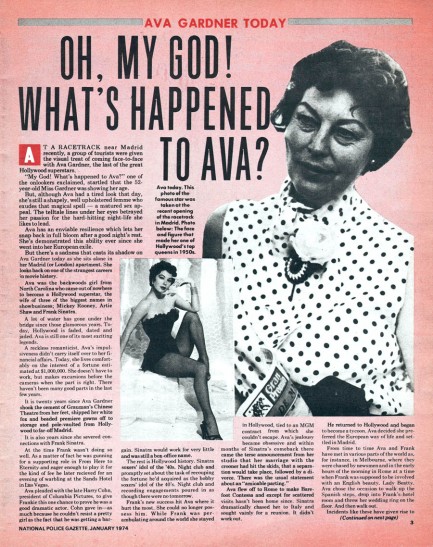 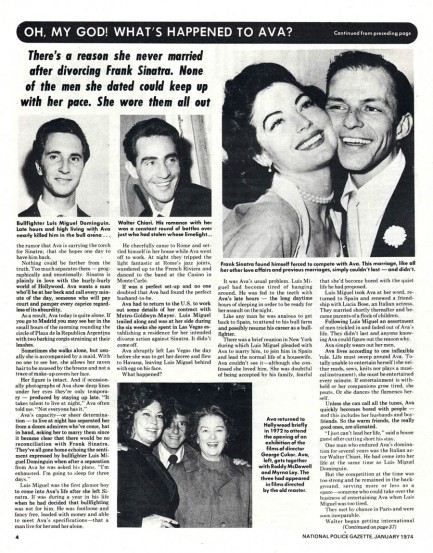 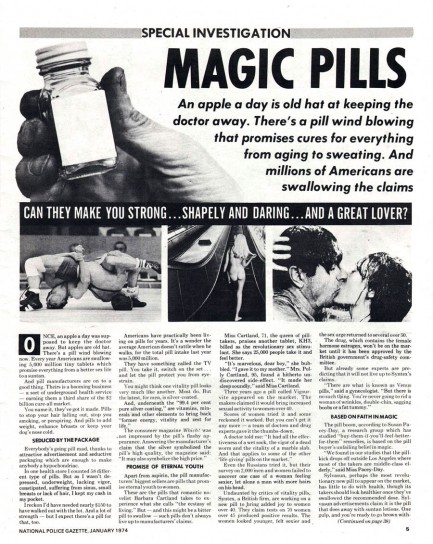  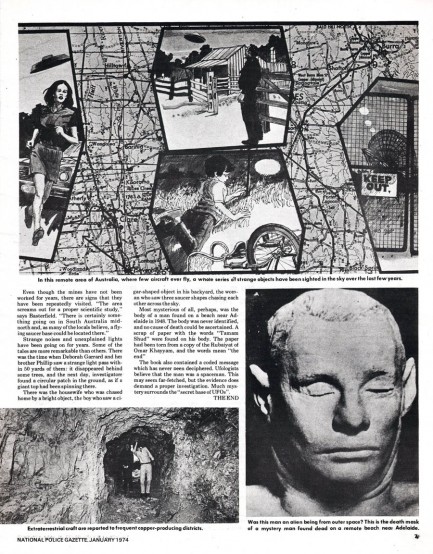 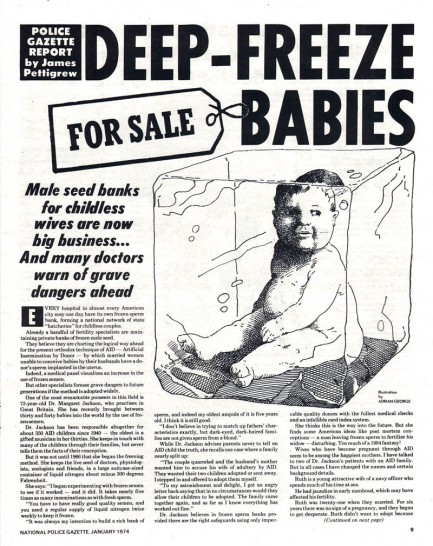 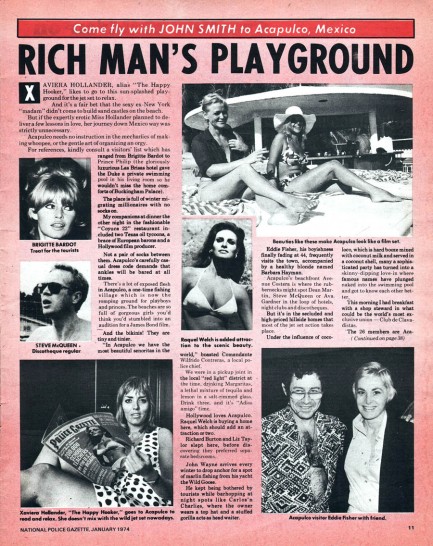 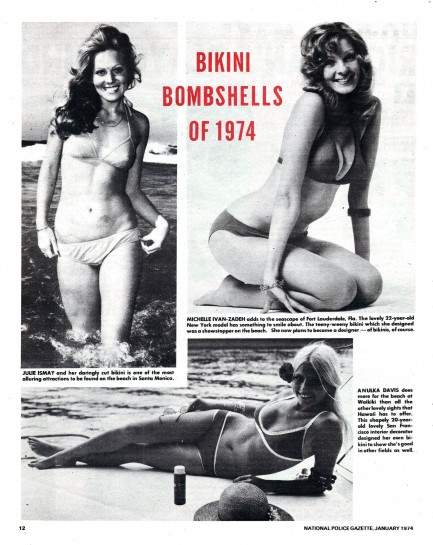  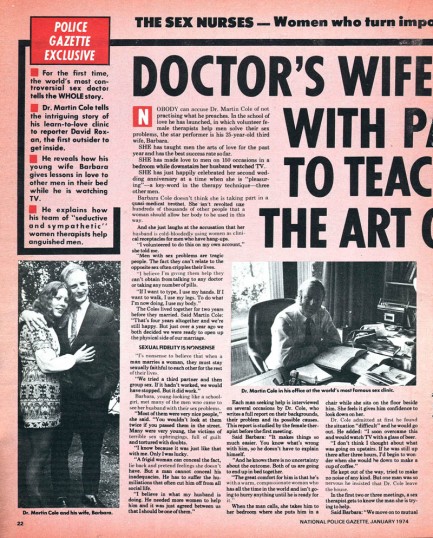 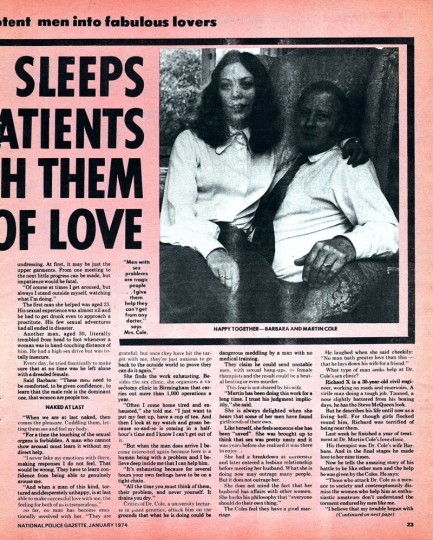 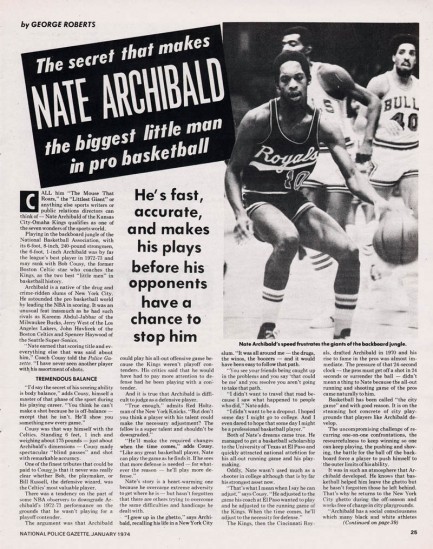  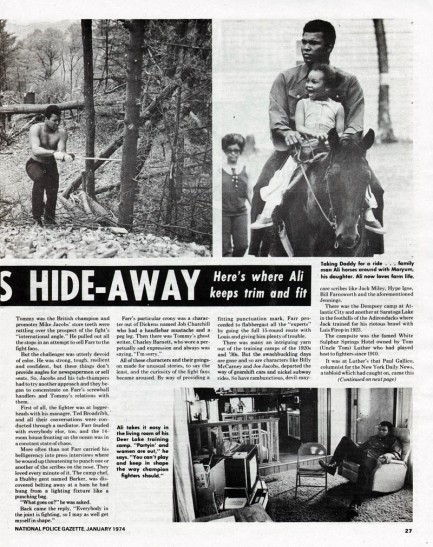 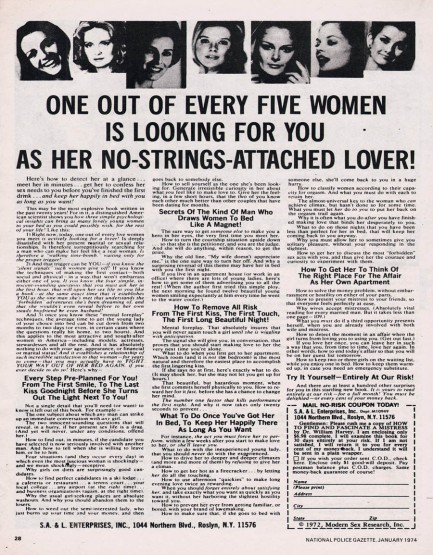 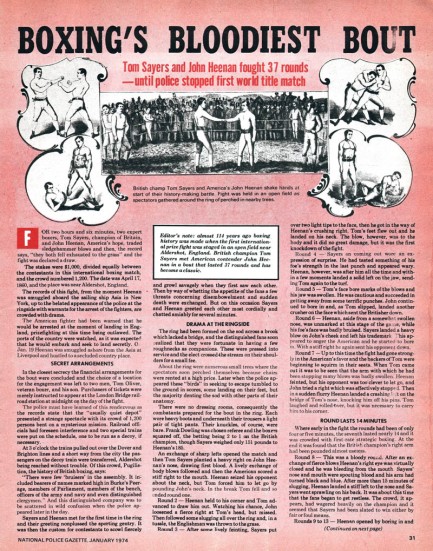 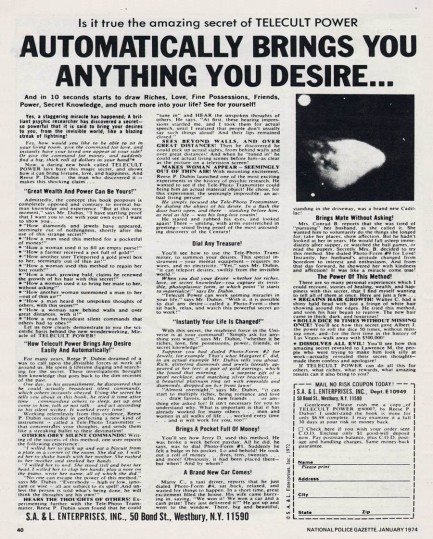 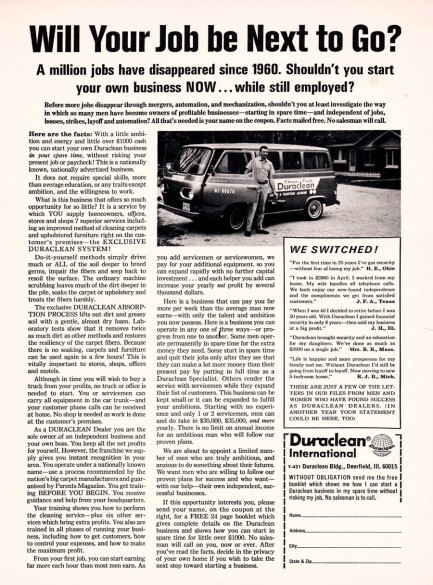

|
 |

The headlines that mattered yesteryear.
2003—Hope Dies
Film legend Bob Hope dies of pneumonia two months after celebrating his 100th birthday. 1945—Churchill Given the Sack
In spite of admiring Winston Churchill as a great wartime leader, Britons elect
Clement Attlee the nation's new prime minister in a sweeping victory for the Labour Party over the Conservatives. 1952—Evita Peron Dies
Eva Duarte de Peron, aka Evita, wife of the president of the Argentine Republic, dies from cancer at age 33. Evita had brought the working classes into a position of political power never witnessed before, but was hated by the nation's powerful military class. She is lain to rest in Milan, Italy in a secret grave under a nun's name, but is eventually returned to Argentina for reburial beside her husband in 1974. 1943—Mussolini Calls It Quits
Italian dictator Benito Mussolini steps down as head of the armed forces and the government. It soon becomes clear that Il Duce did not relinquish power voluntarily, but was forced to resign after former Fascist colleagues turned against him. He is later installed by Germany as leader of the Italian Social Republic in the north of the country, but is killed by partisans in 1945.
|

|
|

It's easy. We have an uploader that makes it a snap. Use it to submit your art, text, header, and subhead. Your post can be funny, serious, or anything in between, as long as it's vintage pulp. You'll get a byline and experience the fleeting pride of free authorship. We'll edit your post for typos, but the rest is up to you. Click here to give us your best shot.

|
|






























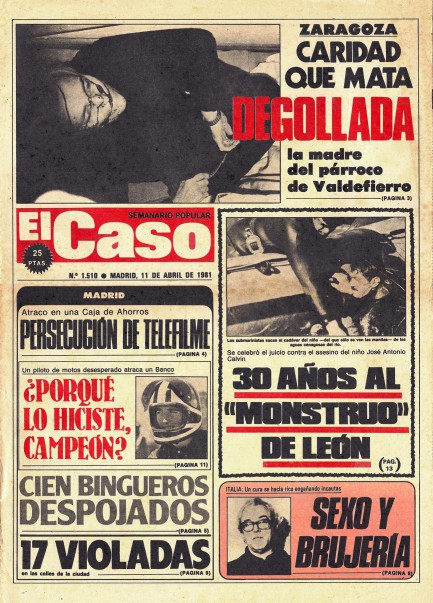
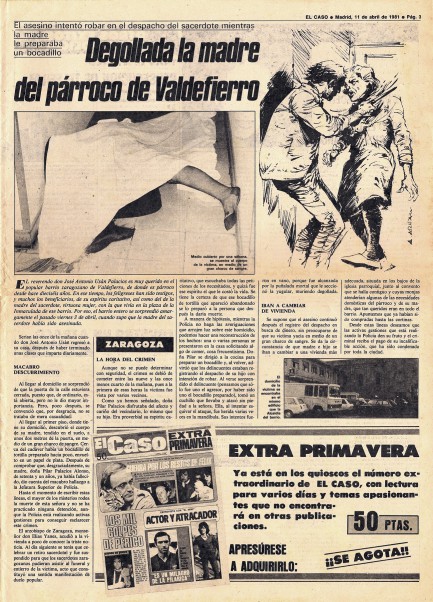
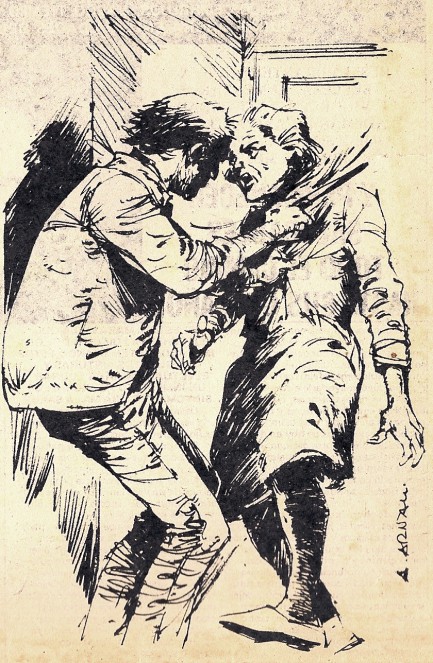
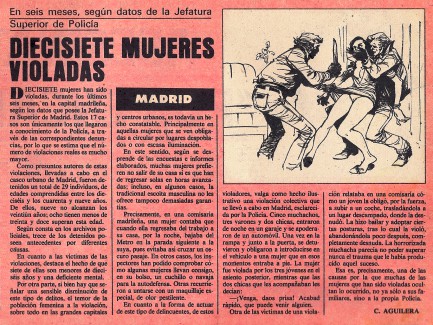
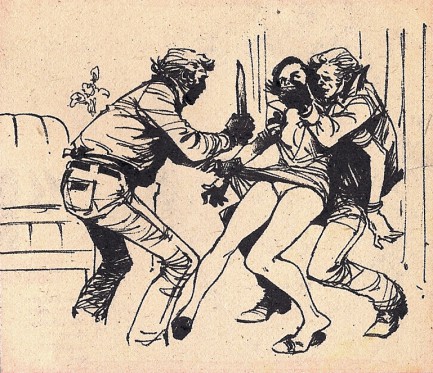


 The art deco influenced fútbol poster above, which is signed in its lower right corner by an artist whose identity is unknown to us, advertises a match between top flight Spanish sides Valencia F.C. and Real Madrid at Valencia’s Estadio de Mestalla. Months earlier Spain had become a republic after years of dictatorship under Miguel Primo de Rivera, and was about to enter into a period of unrest and rising fascism, leading to civil war and decades more dictatorship under Francisco Franco. But on this particular winter Sunday in Valencia the sole battle took place on the pitch at Mestalla. The star player on the field was Manuel Olivares Lapeña, who you see at right, but it was Jaime Lazcano Escolá and Juan Costa Font who netted goals that day. The game ended in a 1-1 draw—a triumph for a Valencia squad languishing at the bottom third of the table. But Real Madrid won the league.
The art deco influenced fútbol poster above, which is signed in its lower right corner by an artist whose identity is unknown to us, advertises a match between top flight Spanish sides Valencia F.C. and Real Madrid at Valencia’s Estadio de Mestalla. Months earlier Spain had become a republic after years of dictatorship under Miguel Primo de Rivera, and was about to enter into a period of unrest and rising fascism, leading to civil war and decades more dictatorship under Francisco Franco. But on this particular winter Sunday in Valencia the sole battle took place on the pitch at Mestalla. The star player on the field was Manuel Olivares Lapeña, who you see at right, but it was Jaime Lazcano Escolá and Juan Costa Font who netted goals that day. The game ended in a 1-1 draw—a triumph for a Valencia squad languishing at the bottom third of the table. But Real Madrid won the league. 

